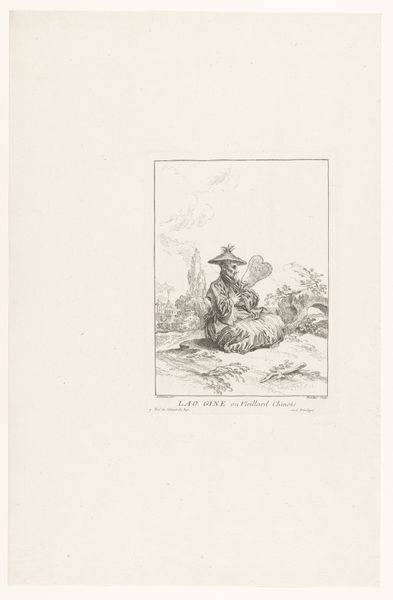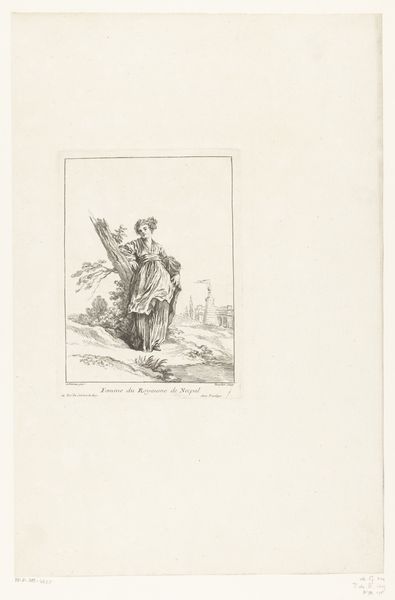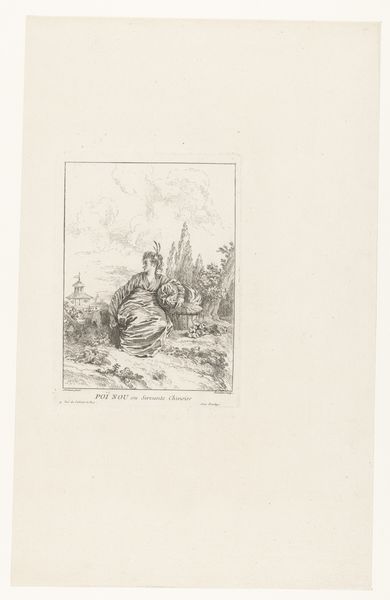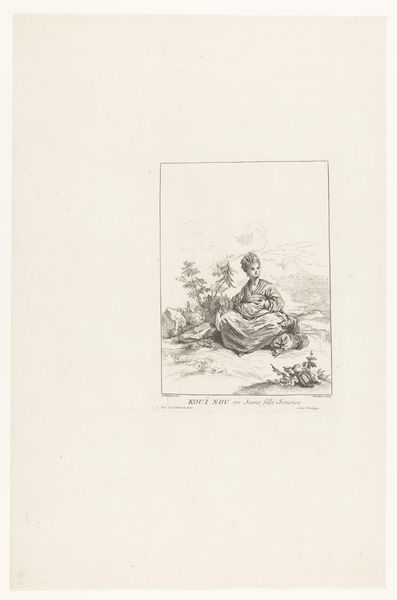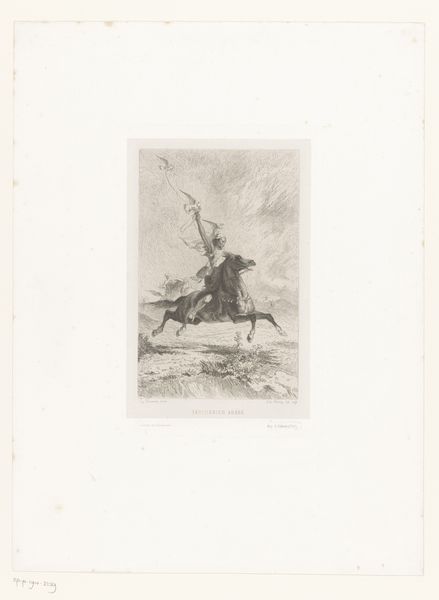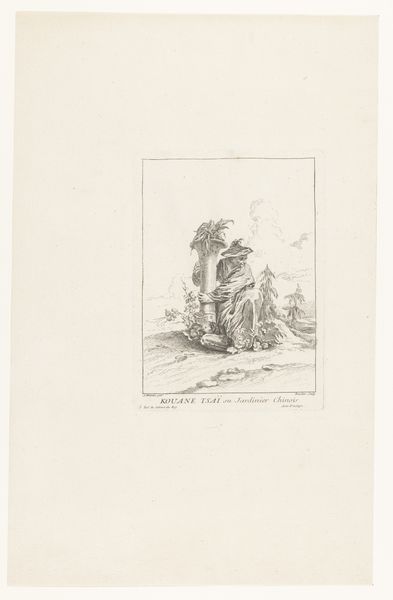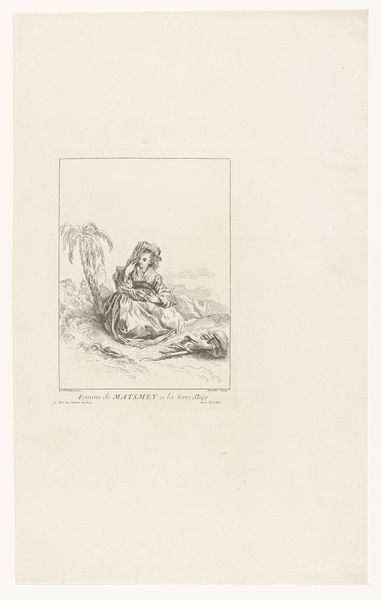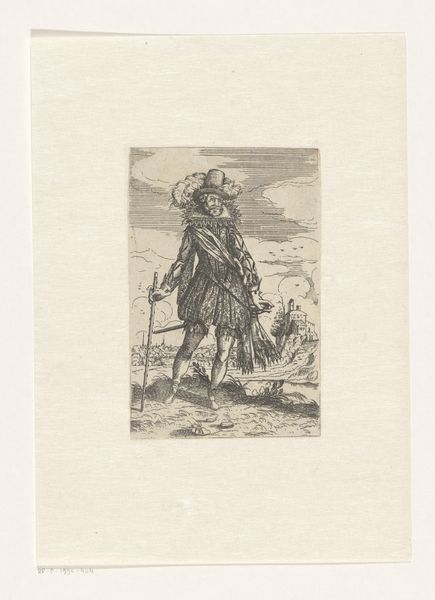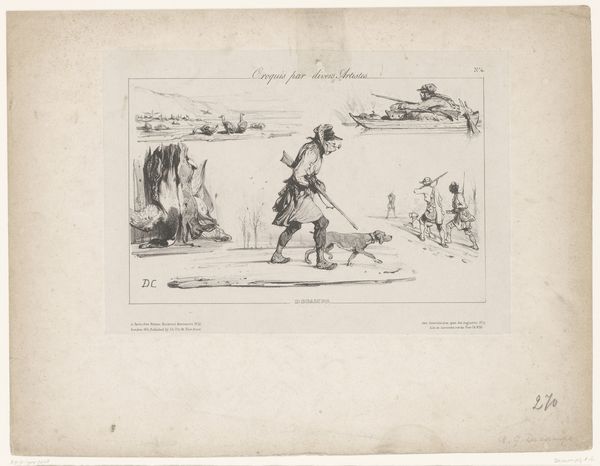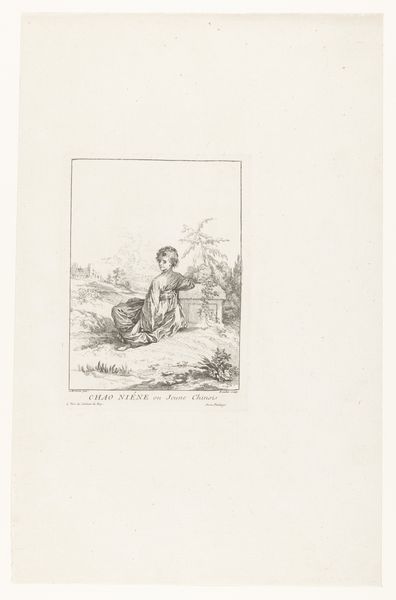
print, engraving
#
baroque
# print
#
landscape
#
figuration
#
orientalism
#
genre-painting
#
engraving
Dimensions: height 218 mm, width 158 mm
Copyright: Rijks Museum: Open Domain
Curator: Here we have Francois Boucher's "Landscape with Seated Eunuch from the Chinese Palace," an engraving dating to about 1731, part of the Rijksmuseum collection. It immediately strikes me as rather austere, even desolate, despite its figuration and delicate lines. Editor: What I find fascinating about this particular piece is how Boucher engages with the Orientalist aesthetic. We must ask, what sociopolitical motivations underlie this seemingly benign portrayal? Curator: Yes, his representation utilizes compositional arrangements and lines to produce what was regarded, from a Western perspective, as a vision of "the Orient" at the time. There's a linearity in the man's posture and his large hat; the staff is rigidly vertical against a windswept backdrop. I feel these contrasts work together. Editor: Absolutely. Remember, representations like these do not exist in a vacuum. The depiction of the eunuch—an individual often marginalized—and the romanticized, exotic "Chinese" landscape contributes to a narrative, however unintentional. Does the composition reinforce established power dynamics between Europe and Asia through its very act of observation and visual appropriation? Curator: While acknowledging the historical context you are setting up, let's consider what else the artist is doing. The man holds a tall stick that is releasing smoke—creating what appears to be an invitation or possibly even acting as a visual signal. This detail draws the viewer in. Editor: But is the act of being “drawn in” complicit in perpetuating that gaze? Shouldn’t we analyze how these artworks may operate within broader ideological systems and colonial desires? What kind of fantasies are on display in these detailed line drawings? Curator: That's one powerful angle. Though focusing on artistic construction can provide equal insight, especially because it also unveils that no image is apolitical. How light, shadow and line weight depict what is real or invented; that, to me, is another essential starting point. Editor: I'll meet you there. The way in which the formal components are used, can subtly reinforce existing stereotypes and ideas, and it is essential for us to investigate that. This has given me some new avenues to consider the sociopolitical impacts in visual representation. Curator: And examining those contexts help to expand what formal components can teach us about that period.
Comments
No comments
Be the first to comment and join the conversation on the ultimate creative platform.
